| Reviews & Columns |
|
Reviews DVD TV on DVD Blu-ray 4K UHD International DVDs In Theaters Reviews by Studio Video Games Features Collector Series DVDs Easter Egg Database Interviews DVD Talk Radio Feature Articles Columns Anime Talk DVD Savant Horror DVDs The M.O.D. Squad Art House HD Talk Silent DVD
|
DVD Talk Forum |
|
|
| Resources |
|
DVD Price Search Customer Service #'s RCE Info Links |
|
Columns
|
|
|
House on Sorority Row, The
The house mother to end all house mothers!"
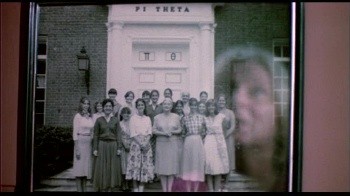
The Movie
I'm ashamed to admit that until listening to the new audio commentary on this second release of The House on Sorority Row, I didn't know it was filmed in my backyard. For a genre aficionado like me, it's embarrassing--especially considering I grew up in the area and have lived here most of my life. Maybe I've just been too blinded by our other claim to horror fame--the Exorcist steps in Georgetown--to notice the bounty that has been there all along, less than an hour away in the Baltimore suburb of Pikesville. I've also been to the campus of the University of Maryland, completely unaware that it too hosted a shot in one of my favorite slasher movies of all time.
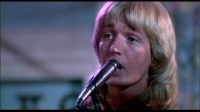 Shame on me. It's probably for the best; the mere thought of wandering that palatial house--the bedrooms, the cellar, the stairwell, the patio--and of walking by the infamous pool is almost too much for my excited heart to handle (that schoolgirl squeal you just heard? Yep, that was me...). I can't imagine anything cooler than walking through the estate on a dark night, preferably when the current tenants are away and the cops are busy elsewhere. You know what else I missed? The 2008 and 2009 reunion shows by the D.C.-based band 4 Out of 5 Doctors, who appears in the movie and was on the rise when this was filmed. They recently performed down the damn street in Vienna and Falls Church (sigh, no "Modern Man" for me...). To think, a cornucopia of House on Sorority Row memories surrounding me, and I blew it harder than a hooker in...um...the house on Fraternity Row.
Shame on me. It's probably for the best; the mere thought of wandering that palatial house--the bedrooms, the cellar, the stairwell, the patio--and of walking by the infamous pool is almost too much for my excited heart to handle (that schoolgirl squeal you just heard? Yep, that was me...). I can't imagine anything cooler than walking through the estate on a dark night, preferably when the current tenants are away and the cops are busy elsewhere. You know what else I missed? The 2008 and 2009 reunion shows by the D.C.-based band 4 Out of 5 Doctors, who appears in the movie and was on the rise when this was filmed. They recently performed down the damn street in Vienna and Falls Church (sigh, no "Modern Man" for me...). To think, a cornucopia of House on Sorority Row memories surrounding me, and I blew it harder than a hooker in...um...the house on Fraternity Row.
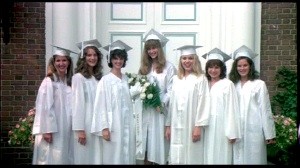
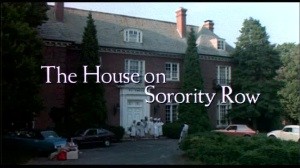
I won't try and convince you that this is a horror classic, but it's one of the best of its class--a remarkable accomplishment considering it came at the tail end of the Golden Age of slashers. It was released in January of 1983, well after Black Christmas, Halloween and the top-tier genre films those two gems inspired, including Halloween II, Friday the 13th (and its first two sequels), Terror Train, Prom Night, My Bloody Valentine, Hell Night and Happy Birthday to Me (which, coincidentally, starred another great vixen who went on to have a hugely successful career on The Young and the Restless). I hold all of those films--the genre's best--in high regard.

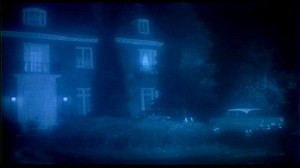
House easily belongs in that group, and in many ways it's even better than many of those films--despite the fact that it follows a similar formula. House opens on a dark and story night in 1961, where we get a hint at the back story fueling the film: An unsuccessful birth leaves Dorothy Slater (Lois Kelso Hunt) a depressed, scarred woman. When we flash forward to the present, we get more hints at her instability--signs that her concerned doctor tries to warn her about before something snaps and it's too late. The last thing she needs is stress...
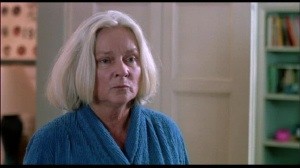
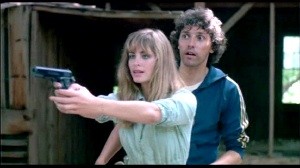
But with the end of the school year approaching, Mrs. Slater--an institution at Pi Theta sorority, where she has long been the house mother--figures serenity will soon be hers as the campus clears out for the summer. Little does she know that her seven graduating seniors have other ideas--when the facility for their year-end party falls through, they move the annual bash to their house for one last night of fun before they head out into the real world. But when an angry Mrs. Slater finds out, she orders the party cancelled and the co-eds to leave--a directive that doesn't sit well with ringleader Vicki (Y&R vet Eileen Davidson), the sisters' self-appointed ringleader.
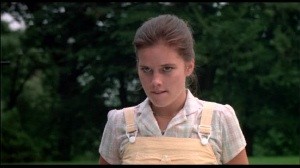
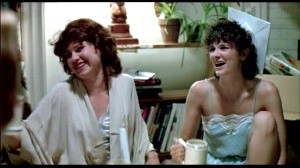
Never one to back down, Vicki comes up with a plan: have the party, and teach Mrs. Slater a lesson via one final sorority prank. But when the prank goes awry, the seven sisters are staring at a seemingly dead body--and when the delivery trucks suddenly honk their horns while heading up the driveway toward the secluded house, the women make a quick, panicked decision to hide the body and continue with their party. That doesn't sit well with Katey (Kathryn McNeil), whose protests are met with fear from her sisters ("If you call now, it's over for all of us!").
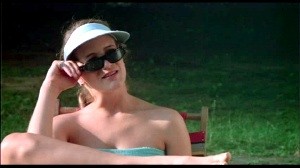
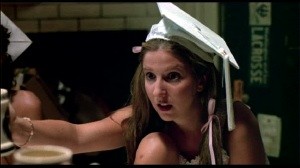
The house is soon crawling with partygoers, and as the night moves on the women soon discover that something strange is going on. Did the body disappear? Is Mrs. Slater alive? And where the heck is sister Stevie, who headed to the cellar to fix the electricity? One by one, the women meet their maker as House heads to its conclusion, where a final twist is in store.
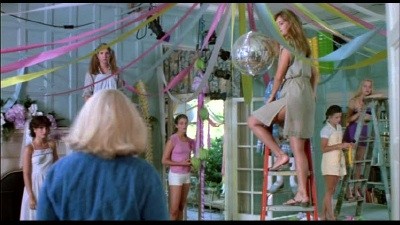
It sounds formulaic, and it is. From a structure standpoint, the film presents nothing that slasher fans haven't seen a million times over. But House executes the important elements at a much higher level than most of its ilk; the film is constructed with care, and the overall impression is one of very high quality--surprising considering that this was the writing and directing debut of Mark Rosman, who manages to make this work stand out despite the obvious influences (Black Christmas and Diabolique being the most obvious).
One of the biggest advantages the film has is its acting, another surprise considering the amount of acting newbies (this wasn't a SAG production, and many in the cast count this as their one and only role). Save for one sister (more on her later), the actresses here (who are actually age appropriate, another slasher rarity) bring a natural, likeable quality to their roles--and, just as important, seamlessly interact with each other. They play women who are likeable, smart and sure to be successful--if it weren't for this dang mess they've created.
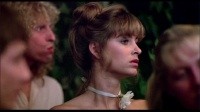 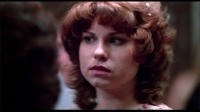 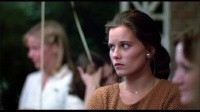 |
| |
What's so great about the casting is that even though you recognize Katey as the intended heroine and Vicki as the bitch, both characters are a lot more complex--and show different sides that go against type. Vicki (and Davidson) isn't anywhere close to being over the top; she's far more believable and responsible than you'd expect (and--can you believe it?--she engages in safe sex!). Even better, four of the supporting actresses are written with equal importance and performed with equal skill. It wouldn't be a stretch to envision any of the others as the lead character/"final girl" in this or any other slasher, a rarity for the genre. Harley Kozak (as Diane), Janis Zito (as Liz), Robin Meloy (as Jeanie) and Ellen Dorsher (as Stevie) are all fantastic, refusing to let their characters be disposable. They don't overact or look like they don't care; each injects little touches that hint they were actually thinking about how they would react if this happened in real life.
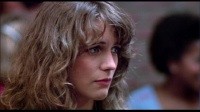 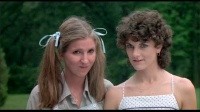 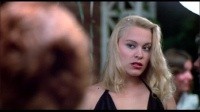 |
| |
Throw in the fabulous McNeil and Davidson--who nail their roles, injecting their characters with surprising depth--and you have one of the best slasher ensembles ever. "This was a juicy role," notes Davidson in the commentary. "It had different levels, and I remember trying to get everything I could out of it in terms of what I could play--not just a one-note bad girl, but try to play her vulnerability, too."
Yeah, I recognize I'm talking about a low-budget horror film and these performances are far from Oscar worthy (even Davidson admits to "some chewing of furniture on my part"), but the praise is deserved considering the mediocrity that we've come to expect in this niche. Even Michael Kuhn, who plays Kate's blind date Peter and is now a successful producer (his cool projects include Wild at Heart, Red Rock West and Severance) is surprisingly effective and extremely likable in a small role, providing a necessary link between the sisters and the viewer. (Assistant director Paul Schiff is also now a successful producer.)
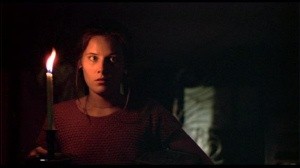
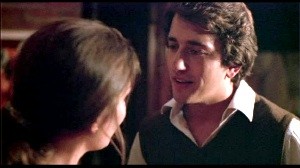
The cast quickly makes you feel comfortable, and that goes a long way in selling their fear--lending an air of believability to their situation, which unfolds with surprising logic (well, at least by slasher standards). Their predicament--and their reaction to it--isn't nearly as preposterous as it should be. In certain circumstances, you might be able to understand how--given the timing and the immense peer pressure created out of dangerous group think--the sisters' mistake could actually unfold like this. In some twisted way, the set-up actually makes sense. Do you want them to get caught? The film works no matter how you answer that question.
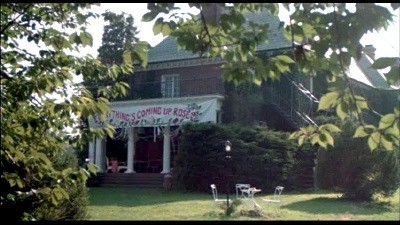
Their solid acting also creates a slight sense of compassion--while we recognize these women have done a bad, bad thing, they aren't cast off as terrible people we necessarily want to see slaughtered. So when they get nervous, we get nervous for them--their fear of getting caught proves to be a powerful weapon in Rosman's arsenal. He throws us some memorable curveballs both big and small, from simple things like that honking horn to deliciously demented ones like a frat boy prank by the pool or a run in with a cop. Moments like this--which cause our gut to sink right along with the sisters' stomachs--show the director had the perfect sense of humor. It's an element he uses sparingly and subtly, never calling too much attention to it or pushing it too far--it's the perfect way to blend horror and humor, something that so many filmmakers fail at (one shot, where the sisters find a hiding/transportation solution, never fails to make me smile in spite of myself).
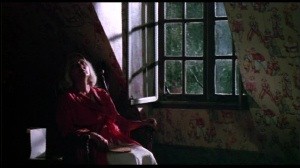
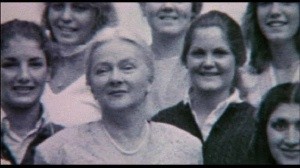
The director has to be commended for the pacing--another quality that helps to separate the film. Most of the scenes flow together with more logic than normal; House never lags. You can tell that thought has been put into the story and how it should progress--every scene has a purpose and propels things forward from either a characterization or plot perspective. Rosman uses a few red herrings to excellent effect, refusing to be too obvious. Even when things start to get (even more) out of hand in the final act, the filmmaker offers acceptable explanations. So instead of yelling at the screen or rolling your eyes at distracting, inexcusable behavior, you're allowed to sit back and enjoy.
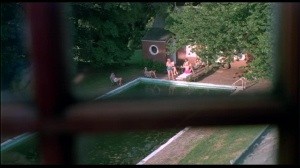
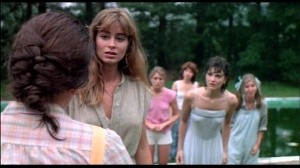
The director also assembled a great crew and knows how to craft an outstanding shot (many of which show a nice artistic touch) and compose an effective sequence, relying more on mood than cheap thrills. In almost all aspects, House just looks and feels more "theatrical" and professional than most slashers. In addition to the solid editing, the cinematography by Tim Suhrstedt (who went on to win an Emmy and was the director of photography for Little Miss Sunshine, one of his many successful projects) is highly effective. A few visuals are superlative--including the fateful poolside prank, which shifts to handheld cameras and beautifully heightens the "you are there" tension; a pan shot that moves from sister to sister at the party, perfectly relaying their guilt and fear; and a tense conversation in the kitchen.
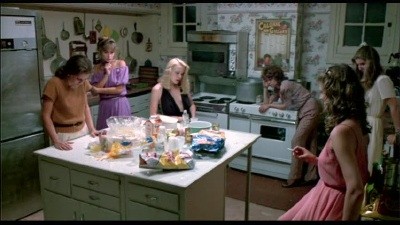
It would be a crime not to mention the score of Richard Band, who went on to compose for a wide range of horror projects. One of the most satisfying elements of House is the music. In the audio commentary, Rosman notes Band was influenced by some Bernard Herrmann elements, yet the result is still original. It shows a remarkable amount of restraint, yet also develops a personality that helps distinguish the film. From the opening sequence that ends with a chilling scream and leads into the comforting sorority theme, you can tell this is better than the average slasher. Band knows just the right notes to hit--and at just the right levels--to perfectly enhance the film without being distracting. Simply put, this is one of the most satisfying slasher scores I've heard. Says McNeil: "The music isn't over the top, which is unusual for one of these movies...it's underneath, which I like."
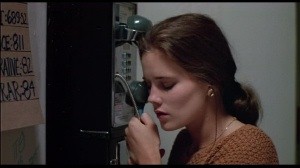
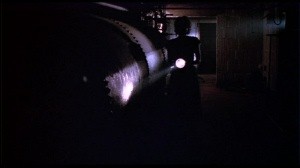
Also of note is the art direction of Vincent Peranio, who worked on many a John Waters classic and went on to be the production designer for acclaimed Baltimore-based TV hits Homicide and The Wire. His work here helps contribute to the film's mood, with some understated yet effective set pieces standing out (a colorful patio shot near the end is hauntingly beautiful thanks to his and Suhrstedt's work). House holds up surprisingly well--it isn't very dated from a visual or performance perspective. Nothing feels too forced or obvious from a visual perspective--there are no distractions and no crazy tricks to detract from the film's story-driven core.
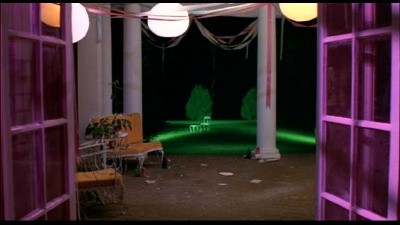
Rosman notes in the audio commentary that he viewed House as more of a character-driven suspense film, not a blood-and-guts slasher: "My goal was really to make a horror film that focused on the characters and have the girls in it not just be victims. The whole idea of it was they were culpable and they were sort of bringing this on themselves." This is more about suspense, and the gore is minimal: "A lot of the killing scenes were designed to be a shot where you don't see the killer and you don't see the payoff to the murder. It was just kind of a more mysterious, Hitchcockian way to do it. But we realized that we really had to show some blood."
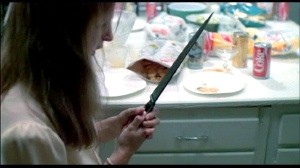
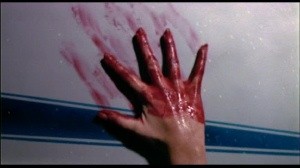
As such, the effects here are sparse and mostly average (a few inserts, like the first murder and a stab to the hand, are painfully obvious). So if you're looking for lots of gore, you'll be disappointed. That's not the film's purpose; thank heaven Rosman didn't want to gross you out. Some of the slice-and-dice moments still work very well (my favorite moment being a quick yet vicious slit to the throat), and you gotta love the film's signature implement of destruction, which lends some class to the proceedings and gives the movie its own calling card.
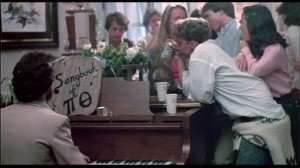 Perhaps I'm going overboard, but there's very little I don't like about The House on Sorority Row (one of many examples: the large number of party extras--including the backside of piano-playing director Rosman--which helps sell the authenticity and raises the stakes on the sisters' paranoia of being caught). Even with the film's few faults, it still soars. You may see the twist coming (I didn't the first time I saw it on VHS back in the '80s, when I was younger and dumber), but even if you do it's handled so well that it doesn't matter. I love some of the nightmare visuals Rosman throws in near the end, and wish he used at least two of them a little more (one comes around the 1-hour, 10-minute mark, the other near the 1-hour, 18-minute mark). Sometimes he's a bit too restrained, which I don't think I've ever said about a slasher film.
Perhaps I'm going overboard, but there's very little I don't like about The House on Sorority Row (one of many examples: the large number of party extras--including the backside of piano-playing director Rosman--which helps sell the authenticity and raises the stakes on the sisters' paranoia of being caught). Even with the film's few faults, it still soars. You may see the twist coming (I didn't the first time I saw it on VHS back in the '80s, when I was younger and dumber), but even if you do it's handled so well that it doesn't matter. I love some of the nightmare visuals Rosman throws in near the end, and wish he used at least two of them a little more (one comes around the 1-hour, 10-minute mark, the other near the 1-hour, 18-minute mark). Sometimes he's a bit too restrained, which I don't think I've ever said about a slasher film.
The biggest sore thumb here is (God bless her) Jodi Draigie, who plays blond beauty Morgan. Given the talent of those around her, the actress looks particularly out of place. A few moments--including her leisurely pace during an urgent moment and her terrible delivery of a line in the kitchen (something that even prompts a laugh from Davidson in the commentary)--are like jarring record scratches during a beautiful, ominous aria. It's clear Rosman was aware of her limits (her lines are kept to a minimum), and the character is handled like a "blond", so maybe her performance is fitting ("We realize this takes a lot of thinking, Morgan," teases Diane). And Draigie actually recovers well in one of the film's more memorable sequences, giving her a nice moment ("We drink our beer from mugs of blue and gray...").
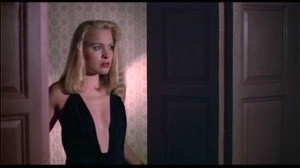
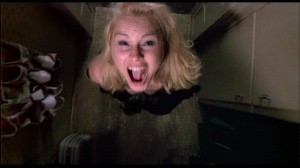
Another minor quibble is the dubbed voice of Mrs. Slater. In the commentary, Rosman notes that ultimately he didn't think Hunt's voice was husky and sinister enough, so he dubbed in her lines with another actress during post-production. While the actual voice is fine, the final effect feels slightly unnatural in a few scenes (her early conversation with the doctor and at least one confrontation with the sisters). But she doesn't have many lines anyway, and some of her scenes play fine (you'll notice a few other quick dubs, common in any film). It doesn't come close to ruining the film's flow, but it wasn't the best decision. Also annoying are the film's theatrical poster ("Nothing can prepare you for what happens when she fights back!") and trailer ("In this sorority, nothing is off limits...as long as it's fun for the girls!"), which resort to (misleading) salaciousness. This is not that type of movie, and even Rosman has objected to the marketing.
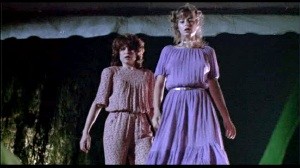
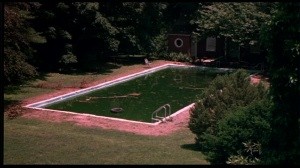
There are a few other less-than-perfect moments, including an odd assumption after the sisters discover something, Katey's bad decision to leave someone and some head-scratching choices made by Jeanie when she's being chased (um, why would you flush the toilet when you're trying to hide?!), but the fact that I can count those mild missteps on one hand (well, if Morgan counts as one) is refreshing. You also have to swallow the sisters' continued lack of conscience (we expect the most of Kate, so her inaction is the hardest to take), but then we wouldn't have a movie, right?
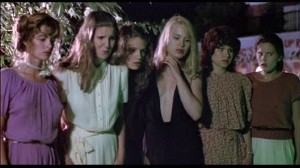
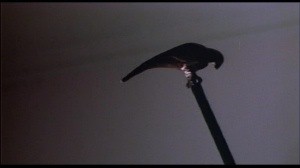
Davidson sums it up best on the audio commentary, where she expresses her appreciation while noticing new things that escaped her before: "So much of this movie tells you that it was a labor of love...all the details, you can really tell that." It's clear that everyone in front of and behind the camera wanted to do a quality job and make their film as good as possible. Despite a marketing campaign that would have most people dismissing it as trash, the film is far more grounded and authentic than most of its slasher sisters. Sadly for us, Rosman moved on to other genres (he's perhaps best known for his film and TV work with Hilary Duff). But he made his mark, and everyone involved with House crafted an underrated gem that still works its magic on me nearly three decades later. So I raise my stein and propose a toast: to Rosman, his cast and crew, and to all the Thetas far away...
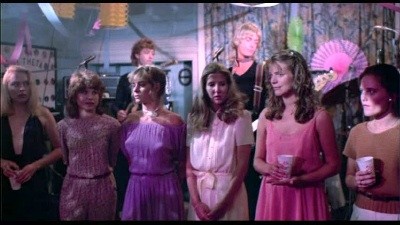
The DVD
Video:
If you blinked, you might have missed the quickly out-of-print Elite disc in 2000. This "25th Anniversary Edition" (an odd label considering 2008 would have been the right release year for that birthday) from Liberation also provides an anamorphic 1.85:1 transfer, and to be honest I don't notice any difference. That isn't a bad thing, because the Elite disc looked pretty good. And considering the film's age, it's probably not going to look much better. It has a very dark and dim look, and there's plenty of grain and film dirt--but not nearly enough to worry about. Black levels and contrast are slightly off in a few spots, but that's another minor quibble (in fact, it sort of adds to that '80s slasher feel, which I like).
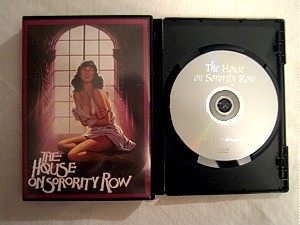 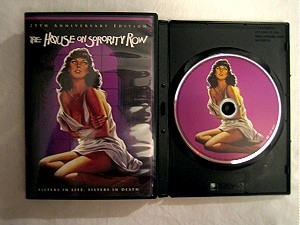 |
| |
Audio:
The upgrade here is a 5.1 mix, with a 2.0 track (the only option on the Elite disc) also available. Again, nothing here is wrong--the dialogue is always understandable and clear, and the great score is effective--but I didn't notice any dynamic improvement in the 5.1 track. The rear channels were surprisingly quiet, missing a few opportunities. But we're dealing with modest source material anyway, so I can't complain, and the film sounds fine (save for a few obvious dubs, which are very minor distractions). And the morning after I watched this, I woke up with Richard Band's theme humming through my head, so it has to be doing something right.
Extras:
- Mark Rosman
The bad news first: The "alternate ending" listed on the extras isn't a deleted scene, but a 39-second audio clip of director Mark Rosman talking about the original ending he shot for the film. It runs over a still photo from the scene's shoot, and what's particularly painful is that I love the idea and wish it was kept--it would have left a more powerful stamp on the story. But the distribution company said no, forcing the director to stop the film a scene earlier. Rosman doesn't say if the footage still exists (I would guess it doesn't), but I would give anything to see it. It would make a great film even better.
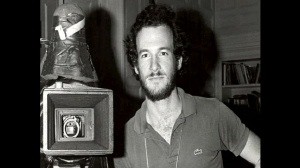
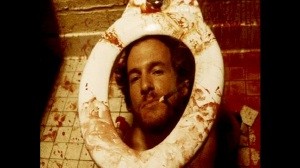
The good news? Rosman is joined by stars Kate McNeil and Eileen Davidson for a fantastic audio commentary that shows how seriously they all took the project and how fondly they look back at the shoot and the film. From the financing and casting to the close calls with money (the crew threatened to walk in the middle of the shoot), from the filming to post production to the reviews, the gang offers plenty of interesting facts and thoughts. Rosman's favorite negative review came from the Baltimore Sun: "The review starts off by saying, 'The ad proclaims 'Filmed in Baltimore'. But that's not the problem. The problem is it's being shown in Baltimore.'" (Thankfully, the film got some good reviews, too.)
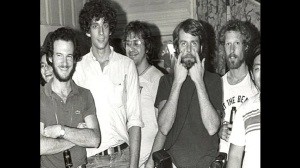 They have a great time reminiscing, laughing along the way as they recall stories (John Waters visited the set!) or make fun of a few flaws. [At one point, Davidson notes "This is like Mystery (Science) Theater 3000...", and she also notes one minor continuity lapse that I missed.] Rosman talks about getting the project off the ground (thank heaven for D.C.-based VA Productions!), the kill scenes (he never intended to linger on the effects) and about the location--the majority of the film was shot (at night) at the actual house in Maryland (the only scenes that weren't were a few gore scenes tacked on later, filmed in his parents' back yard; and the communal bathroom scenes, shot at a local dental school because the house didn't have one). He also talks about a noisy crane, his influences, the props he has kept ("I actually sleep with 'em..."), the original ending (the financers also made him partially colorize the opening black-and-white sequence) and the original title (I actually prefer Seven Sisters, but the powers-that-be feared an association with nuns). The director talks about at least one other filmed scene that was deleted, but again doesn't mention if it still exists.
They have a great time reminiscing, laughing along the way as they recall stories (John Waters visited the set!) or make fun of a few flaws. [At one point, Davidson notes "This is like Mystery (Science) Theater 3000...", and she also notes one minor continuity lapse that I missed.] Rosman talks about getting the project off the ground (thank heaven for D.C.-based VA Productions!), the kill scenes (he never intended to linger on the effects) and about the location--the majority of the film was shot (at night) at the actual house in Maryland (the only scenes that weren't were a few gore scenes tacked on later, filmed in his parents' back yard; and the communal bathroom scenes, shot at a local dental school because the house didn't have one). He also talks about a noisy crane, his influences, the props he has kept ("I actually sleep with 'em..."), the original ending (the financers also made him partially colorize the opening black-and-white sequence) and the original title (I actually prefer Seven Sisters, but the powers-that-be feared an association with nuns). The director talks about at least one other filmed scene that was deleted, but again doesn't mention if it still exists.
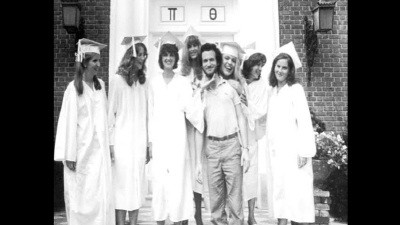
McNeil gets a kick out of how often her character gets talked out of doing the right thing ("I'm such a pill..."), and how terrible she is to her date (I also love how the actress laughs upon hearing the name of Davidson's previous movie). Also listen for a story she shares about her experience on The Mentalist (the actor's name she can't remember is Mark Rolston), and a comment that is even more ironic now considering I'm pretty sure this was recorded before Michael Jackson's death. The women also enjoy mocking the fashions in the film (which I actually think hold up pretty well). "You're actually wearing the only practical outfit of all of us," Davidson says to her co-star at one point. "I know," responds McNeil, "the most sexless outfit of all of you."
Davidson is a blast, talking about how serious she took the role--but still isn't afraid to point out some of the silliness: "I'm fascinated by how the bun on my head changes and shifts throughout the evening: it's low, it's high, it's low, it's high." She also gets nostalgic about bras, recalls a story about the actor playing her on-screen boyfriend (Michael Sergio) and tries to distract us during her sex scene--which features a brief flash of skin ("Everybody go to the kitchen and get a snack now, okay? Get back in about two minutes..."). As for the scene at cemetery? Real cemetery, real grave (now that's creepy!).
The actresses talk about the valuable lessons they learned from the experience, and Rosman talks about his desire to have a cast reunion--which sounds like a great idea and the perfect antidote to Sorority Row, the disappointing 2009 remake that gets a few mentions in this commentary (which was recorded before the film was released).
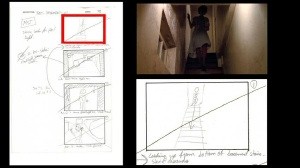
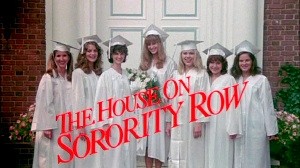
Also included are storyboard comparisons (4:38) for three scenes, a photo gallery (1:49) that includes some cool behind-the-scenes pics (Rosman's a looker!), the film's trailer (the only bonus feature that was included on the Elite disc) and trailers for other films (including an unforgettable one for a horror film called One-Eyed Monster that I'm going to blind buy right now...)
Final Thoughts:
Stylish and suspenseful, The House on Sorority Row--a morality tale where seven sisters pay the price for a prank gone wrong--remains one of my all-time favorite slashers. Surprisingly confident for a first-time filmmaker, director Mark Rosman and his talented cast and crew have crafted a chiller that holds up remarkably well despite its formulaic structure. It's a lot smarter and more tasteful than anyone would expect, and flows with assurance and purpose. House relies on solid characterization (brought to life by an excellent cast), artful shots, crisp pacing, a small dose of black humor and good old-fashioned chills. It's obvious that the cast and crew took their work seriously, and that passion on both sides of the camera translates to the screen. If you have the Elite disc from 2000, the video and audio upgrades here are almost negligible--but the new audio commentary makes this a worthy upgrade. Either way, for suspense or slasher fans this comes Highly Recommended.

|
| Popular Reviews |
| Sponsored Links |
|
|
| Sponsored Links |
|
|
| Release List | Reviews | Shop | Newsletter | Forum | DVD Giveaways | Blu-Ray | Advertise |
|
Copyright 2024 DVDTalk.com All Rights Reserved. Legal Info, Privacy Policy, Terms of Use,
Manage Preferences,
Your Privacy Choices | |||||||












